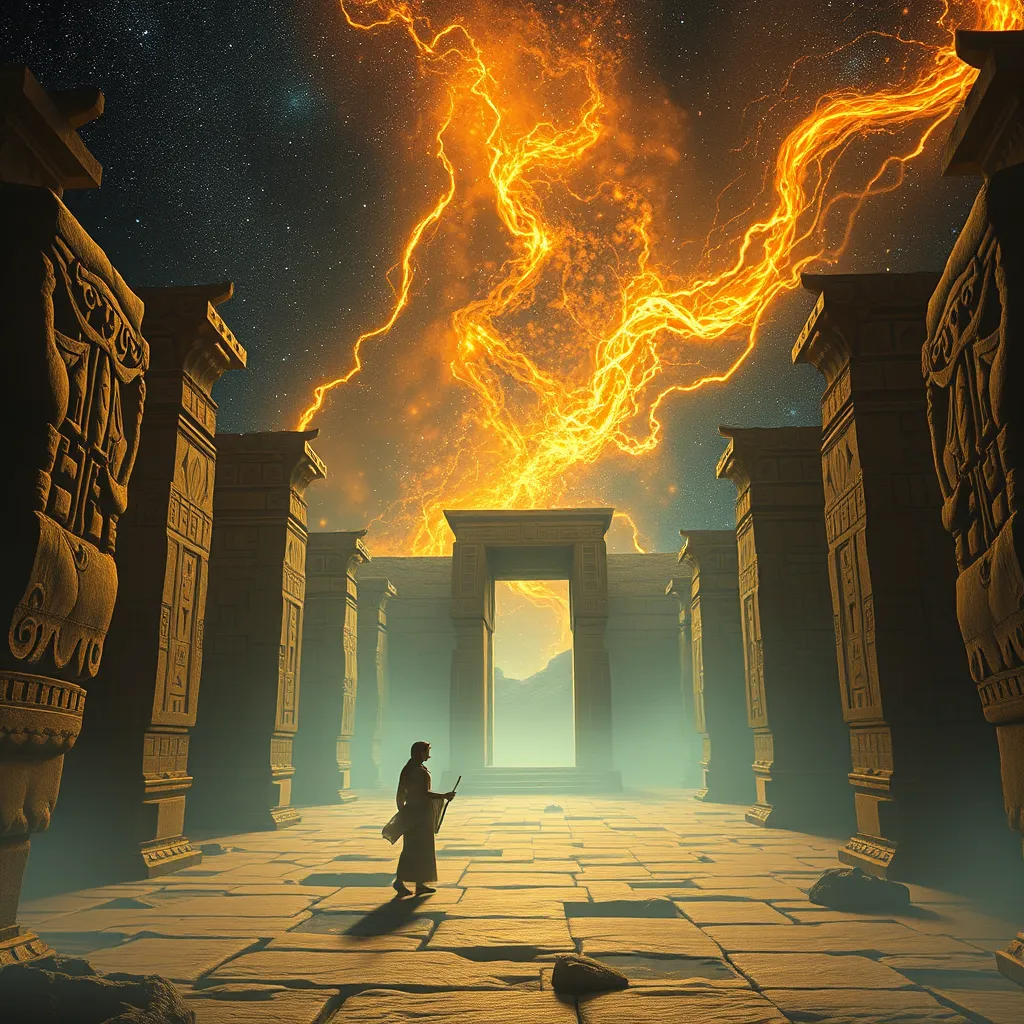The Duat: A Realm of Spiritual Journeys
I. Introduction to the Duat
The Duat, in ancient Egyptian mythology, is a complex and profound realm that serves as the land of the dead. It is a place where the souls of the deceased traverse on their journey to the afterlife. The Duat is not merely a destination but a significant aspect of the ancient Egyptians’ understanding of life, death, and the spiritual universe.
As a spiritual realm, the Duat embodies the beliefs of the ancient Egyptians regarding the afterlife. It is associated with various deities, trials, and cosmic structures that the deceased must navigate in order to attain eternal life. The significance of the Duat lies in its representation of the transition from the mortal world to the eternal, framing the journey of the soul as a transformative experience.
II. The Geography of the Duat
The landscape of the Duat is richly symbolic, filled with various elements that represent different aspects of the spiritual journey. It is often depicted as a dark and chaotic realm, contrasting with the light of the living world.
Key geographical features of the Duat include:
- The Waters of Chaos: A primordial body of water that represents the chaos before creation.
- The Fields of Iaru: A serene and beautiful paradise where the righteous souls dwell, akin to a heavenly afterlife.
- The Hall of Ma’at: A crucial location where the heart of the deceased is weighed against the feather of Ma’at to determine their fate.
Each of these locations plays a vital role in the journey of the soul, embodying the concept of judgment, reward, and transformation.
III. The Journey Through the Duat
Navigating the Duat is a complex process that involves overcoming numerous trials and challenges. The journey is not just a physical traversal but also a spiritual quest for purification and enlightenment.
The major stages of this journey include:
- Facing the Guardians: Souls encounter various guardians who test their worthiness.
- Confronting Demons: The deceased must confront and overcome demons that represent their fears and sins.
- The Weighing of the Heart: This pivotal moment determines if the soul is worthy of entering the afterlife.
Each trial is a reflection of the moral and ethical beliefs of the ancient Egyptians, emphasizing the importance of virtue and justice.
IV. Mythological Figures in the Duat
Central to the Duat are several mythological figures that guide and protect the souls on their journey. Notable deities include:
- Osiris: The god of the afterlife, resurrection, and regeneration, Osiris presides over the judgment of the dead.
- Anubis: The jackal-headed god, Anubis is associated with mummification and the protection of graves; he guides souls through the Duat.
- Ra: The sun god, Ra travels through the Duat each night, symbolizing the cycle of life and death.
These deities, along with other mythological beings and guardians, play crucial roles in the navigation and protection of souls during their perilous journey.
V. The Significance of the Book of the Dead
The Book of the Dead is a fundamental text in ancient Egyptian culture, serving as a guide for the deceased in the Duat. This compilation of spells, prayers, and incantations was intended to assist the soul in overcoming obstacles and achieving a favorable judgment.
Key components of the Book of the Dead include:
- Spells for Protection: These spells offer protection against dangers in the Duat, ensuring safe passage.
- Guides for Judgment: Instructions on how to navigate the Weighing of the Heart ceremony.
- Rituals for Rebirth: Prayers that facilitate the soul’s resurrection and entry into the afterlife.
The Book of the Dead symbolizes the ancient Egyptians’ belief in the importance of preparation for the afterlife and the spiritual journey ahead.
VI. Symbolism and Themes in the Duat
Death, rebirth, and transformation are central themes within the Duat, reflecting the cyclical nature of existence. The journey through the Duat signifies the soul’s transition from the physical realm to a higher spiritual state.
Additionally, the interplay between light and darkness is a recurring motif, representing the duality of existence. Light symbolizes life, purity, and the divine, while darkness embodies chaos, danger, and the unknown. This duality is essential in understanding the spiritual journeys undertaken within the Duat.
VII. The Duat in Modern Spiritual Practices
The Duat continues to influence contemporary spiritual practices and beliefs. Many modern spiritual movements draw upon ancient Egyptian mythology, using the Duat as a metaphor for personal transformation and spiritual awakening.
Comparatively, the concept of an afterlife journey is echoed in various cultural beliefs, including:
- The Tibetan Bardo: A transitional state between death and rebirth in Tibetan Buddhism.
- The Christian Heaven and Hell: Concepts of eternal reward or punishment based on one’s earthly life.
- The Native American Spirit World: Beliefs in an afterlife where souls journey to a spirit world.
These comparisons highlight the universal human fascination with the afterlife and the spiritual journeys that accompany it.
VIII. Conclusion
The Duat holds a significant place in ancient Egyptian beliefs, serving as a profound representation of the afterlife and spiritual journeys. It offers insight into the values and ethics of a civilization that placed great importance on morality, judgment, and the quest for eternal life.
As we reflect on the enduring legacy of the Duat, we recognize its influence on modern spirituality and our ongoing quest to understand the mysteries of life, death, and what lies beyond.




